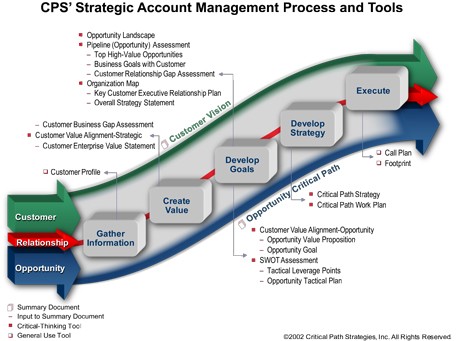Developing Your Strategy Strategy Skills Training From
Post on: 12 Июнь, 2015 No Comment

Finding Your Path to Success
How are you going to win in the period ahead?
iStockphoto/DamirK
How are you going to win in the period ahead? That’s the key question behind developing strategy.
To win at anything worthwhile, you need a game plan. Professional sports teams know this, and this idea applies to your organization, your department, your team and even to yourself as an individual.
To be successful means knowing how to use your talent and resources to best advantage, and it’s very difficult to win if you don’t have this game plan in place.
This article introduces you to a common-sense, systematic approach to strategy development.
Approaches to Strategy
In a for-profit company, for which competition and profitability are important, your goals will differ from those of a nonprofit or government department. Likewise, objectives for a department or team will have a different scope from objectives for your organization as a whole.
For example, and depending on scope and circumstances, you may want to develop strategies to:
- Increase profitability.
- Gain more market share.
- Increase approval ratings, or boost customer satisfaction.
- Complete a project under budget.
To determine your strategy, you must understand fully the internal and external environmental factors that affect you. With that understanding, you can identify your clear advantages and use these to be successful. From there, you can make informed choices and implement your strategy effectively.
So, strategy creation follows a three-stage process:
- Analyzing the context in which you’re operating.
- Identifying strategic options.
- Evaluating and selecting the best options.
We’ll look at this process, and review some useful tools that can help you develop your strategy.
Stage 1: Analyzing Your Context and Environment
In this first stage, you ensure that you fully understand yourself and your environment. Do the following:
Analyze Your Organization
Firstly, examine your resources, liabilities, capabilities, strengths, and weaknesses. A SWOT Analysis is a great tool for uncovering what you do well and where you have weaknesses, providing that you use it rigorously. It’s much easier to achieve your objectives when your strategy uses your strengths without exposing your weaknesses.
Also, look at your Core Competencies. These highlight your unique strengths, and help you think about how you can set yourself apart from your competitors.
Analyze Your Environment
Now you need to examine your current operating environment to predict where things are moving. Are there exciting opportunities that you should pursue? What future scenarios are likely in your industry, and how will these impact the work that you do?
PEST Analysis. Porter’s Diamond. and Porter’s Five Forces are great starting points for analyzing your environment. They show where you have a strong position within the larger environment, and where you may have issues.
As you prepare to create your strategy, make sure that you’re working in a way that’s aligned with changes in your operating environment, rather than working against them. These external factors are often beyond your control, so if you pursue a strategy that requires a change in one of these elements, you may have a long, exhausting, unprofitable battle ahead of you.
A TOWS matrix can help you with your internal and external analysis. This framework combines everything you learned in your SWOT Analysis (TOWS is SWOT in reverse), and then applies it to developing a strategy that either maximizes strengths and opportunities, or minimizes weaknesses and threats.
Analyze Your Customers and Stakeholders
Your strategy defines how you’ll win, and winning is typically framed by how well you satisfy your customers. For-profit companies must keep their customers and shareholders happy. Governments, nonprofits, and project teams all have other stakeholders to satisfy as well. Strategy creation must consider these needs.
Identify your clients and stakeholders. What do your clients want? And who are the key stakeholders in your success? A Stakeholder Analysis will help you uncover these needs and preferences.
Also, look at your market in detail. Answer key questions such as How is our market segmented ?, What subpopulations can we reach cost-effectively? and What is our optimal Marketing Mix ?
Analyze Your Competitors
In a traditional for-profit company, you must understand how your products compare with competitors’ products, and what your competitors’ competencies are. How easy, or difficult, is it to enter your market? What alternatives do customers have?
Our article on USP Analysis helps you identify ways in which you can compete effectively. You’ll also find many useful tools that can help you understand competitors in our article on Competitive Intelligence.
Non-profits, departmental teams and projects have competitors too. Other projects and teams within the department compete for money and other resources. Therefore, you must prove that you can add value. meet objectives, and contribute to organizational success.
Stage 2: Identifying Strategic Options

In Stage 1, you developed an understanding of how your organization or team fits within the context of the internal and external environments. Now it’s time to think about the different things that you could do to create a clear advantage, and meet your objectives. Here are some fundamental activities that can help you make this decision.
Brainstorm Options
Use creativity tools like Brainstorming. Reverse Brainstorming and Starbursting to explore projects that you could run to develop competitive advantage. Guide your brainstorming with reference to the organization’s mission statement, but, depending on your role in the organization, consider how far you should be constrained by this.
Examine Opportunities and Threats
Your SWOT Analysis identified some of the main opportunities and threats you face. Using this as a starting point, brainstorm additional ways to maximize your opportunities, minimize your threats, or perhaps even turn your threats into opportunities.
Solve Problems
A problem-solving approach can also help at this stage. If your problem is that you’re not achieving your goals, ask yourself how you can ensure that you do. (If everyone in your industry finds it hard to deal with a particular problem, then you may gain a competitive edge by dealing with it.)
For example, if you want to increase your customer satisfaction ratings in an industry plagued by poor customer relations, your starting position is low satisfaction. Brainstorm why this is the case, and create strategic options that would increase satisfaction. Tools like Root Cause Analysis. the 5 Whys. and Appreciative Inquiry can give you some interesting new perspectives on these problems.
Stage 3: Evaluating and Selecting Strategic Options
The final stage is to evaluate strategic options in detail, and select the ones that you want to pursue.
Evaluate Options
By this stage, you’ve probably identified a range of good projects that you could run. You must now evaluate these to choose the best strategic options. Consider every option you’ve identified, but don’t make a final judgment until you’ve completed your assessment.
Start by evaluating each option in the light of the contextual factors you identified in Stage 1. What do these tell you about each option?
Techniques like Risk Analysis. Failure Modes and Effects Analysis and Impact Analysis can help you spot the possible negative consequences of each option, which can be very easy to miss. Make sure that you explore these thoroughly.
Decision Matrix Analysis is particularly helpful for bringing together financial and non-financial decision criteria. It helps you weight individual decision criteria, and consider subjective features — like team fit and the likelihood of team buy-in — as well as objective, tangible factors like cost and return on investment.
Choose the Best Way Forward
With your evaluation complete, you now must choose the best strategic option or strategic options, making sure that you don’t choose so many options that you spread your resources too thinly.
Check your ideas for consistency with your organization’s Vision, Mission and Values. and update these if necessary. It’s easy to forget about these critical elements during strategic planning, so ensure that what you want to win is something that contributes towards the organization’s overall purpose.
Check your assumptions using the Ladder of Inference. This helps you confirm the soundness of the reasoning process used to develop your strategy.
There’s a lot of debate and disagreement about the best way of developing a strategy. Don’t be afraid to adapt this approach to your own, specific circumstances!
Implementing Strategy
It’s no good developing a strategy if you don’t implement it successfully, and this is where many people go astray.
See our articles on VMOST Analysis and the Balanced Scorecard for ways of bridging the gap between strategy development and implementation, and our Project Management menu for the techniques you’ll need to use to implement strategy successfully.
Key Points
Your strategy tells you how you’ll achieve success, no matter how that success is defined. And whether you’re developing a strategy at the personal, team or organizational level, the process is as important as the outcome.
Identify your unique capabilities, and understand how to use these to your advantage while minimizing threats. The process and tools identified above will help you identify a variety of potential strategies for success, so that you can ultimately choose the one that’s right for you.
Apply This to Your Life
Practice strategy development by thinking about your own, personal circumstances. Complete the analyses below to think about your personal way forward. Here are some key questions to consider:
- What are your personal strengths, weaknesses, opportunities or threats, and what are your core competencies?
- What are you capable of achieving if you put your mind to it?
- What are the big picture trends in your environment?
- How can you monitor or adapt to these external factors?
- Who are the people who are important to your success (your stakeholders)?
- What options do you have?
- Which of these should you consider?
This site teaches you the skills you need for a happy and successful career; and this is just one of many tools and resources that you’ll find here at Mind Tools. Subscribe to our free newsletter. or join the Mind Tools Club and really supercharge your career!
Join the Mind Tools Club Now and Get Our
Team-Building Activities Book FREE














